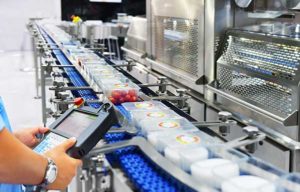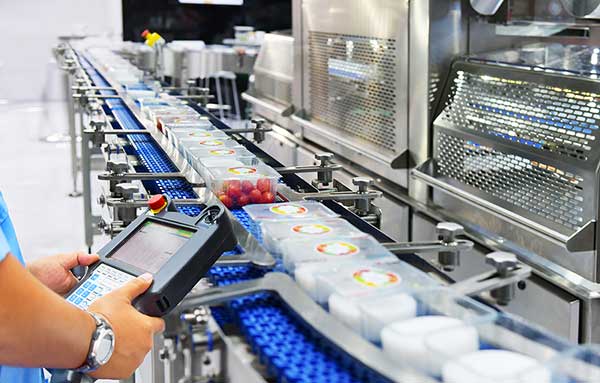Overview
- The future of manufacturing operations lies in automation.
- When implementing mobile automation technology, be sure to look for quality user experience, system responsiveness, security performance and offline connectivity.
- Mobile barcoding and other automation technologies are worth the initial upfront investment and can save organizations money in the long run.

The rise of digital transformation and the aftermath of the COVID-19 pandemic have proven one thing: traditional operations are no longer effective on their own.
The future of manufacturing operations will be driven by automation. By adopting and integrating these practices now, companies can save time, money, and headache later on.
Research has shown that 80% of warehouse executives plan to invest in new technology to stay competitive. And more than half of supply chain companies plan to equip workers with mobile barcoding technology in the near future.
While new technology brings about the promise of efficiency, traceability, and better data capture, it also is fraught with potential issues.
Here are three pitfalls to avoid when automating your food and beverage manufacturing processes.
WATCH VIDEO BELOW: How Caito Foods skipped the pitfalls to harvest success »
1. Poor user experience or interface
When it comes to mobile automation strategies, it’s important to remember the user behind the technology. Often, poor user experience can lead to limited adoption rate or system failure based on user resistance.
Ultimately, it doesn’t matter how much your business needs real-time track and trace capabilities. If your users aren’t comfortable in the system, they’ll find ways to work around it. That’s exactly why ease of use and a structured learning program are critical when selecting an automation or mobile barcoding partner.
The right technology allows employees to do their jobs faster, easier and safer. Successful implementation happens when you consider the investment with people in mind.
2. Poor system responsiveness
To implement automation successfully, organizations must embrace a strategic adoption process. This includes interaction with mission-critical business systems. With RFgen, integration is seamless and secure.
For some browser-based systems, implementing mobile data collection can impact response times. If workers have to wait even a few seconds on the system to validate information, it can trigger resistance and poor implementation.
Ultimately, responsiveness translates to speed. Web-based data collection applications can take up to five to 10 seconds per transaction. While that doesn’t seem like a lot, over time the costs truly add up to a negative impact on your bottom line. The results include wasted labor, loss of profit, stalled inventory, reduced efficiency, and more year-over-year.
With RFgen’s mobile barcoding, transactions can take only milliseconds. Translate this across thousands of transactions each day, by multiple people, and the savings is clear.
SIMILAR: 3 Smart Manufacturing Trends for Food & Beverage »
3. Failure to plan for potential system outages
Network failures are critical to consider when implementing automation. Many operations are faced with time-sensitive production and are unable to pause work due to a system outage.
Always ask how operations can continue, with real-time validation of local activities, in the event of a network failure in your search for mobile barcoding solutions. The majority of manufacturing operations can’t afford prolonged downtime so working with systems that allow continual operation is crucial.
When connectivity is an issue, an offline data collection solution is the only way to keep critical operations running all day, every day. Offline mobility prevents loss of transactions and allows for data collection in challenging areas without security being compromised. Proactively planning for any potential negative outcomes coupled with a world-class security structure will keep your facility and employees running at the top of their game — thus keeping scheduling and productivity goals on track for optimal performance. When you’re equipped with offline mobility you can drive continuous operations 24/7 365 days per year resulting in continuous data collection in areas or facilities with unreliable or lack of connectivity; 99.9% uptime for mission-critical operations in challenging environments; connected remote operation with your ERP systems; and improved cash flow with faster invoicing and reduction of wasted productivity.
The Cost of Not Automating
Organizations often see cost as the biggest challenge to implementation. Investment in new technologies – and the automation of your business processes – can be expensive. However, certain technologies, like mobile barcode software, quickly offset the initial startup costs and can result in immediate savings and ROI.
Human error caused by manual entry, shortages or disruptions in inventory, lack of workforce productivity and the impact of inaccurate data can drain a manufacturing entity of its resources quickly.
The results and profitability of automation far outweigh the upfront investment. Those who don’t automate will quickly fall behind in the marketplace. Embracing smart manufacturing processes is the only way to move forward and stay ahead of the competition.






